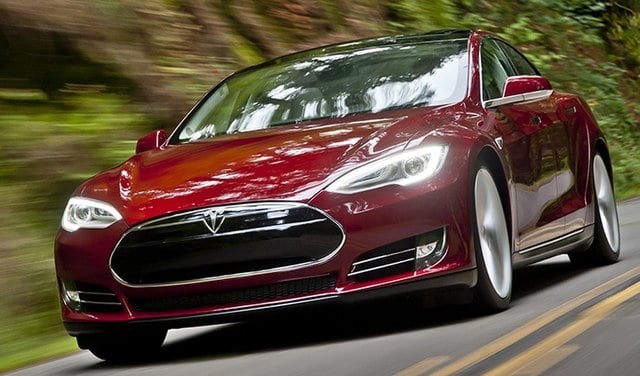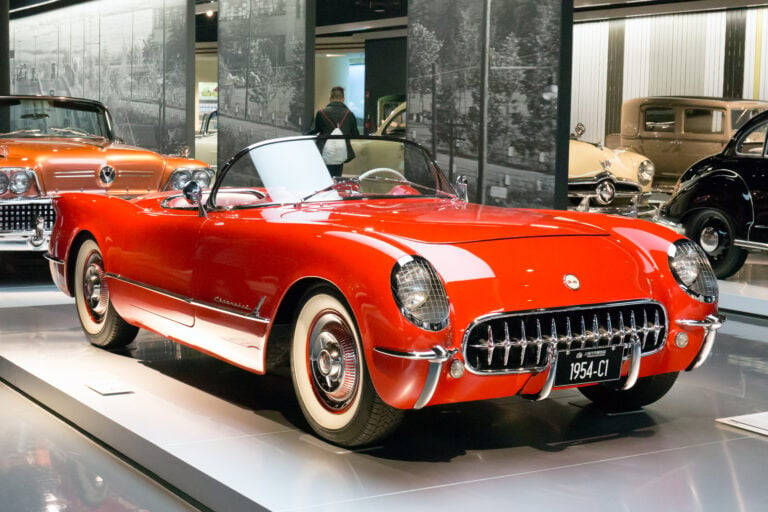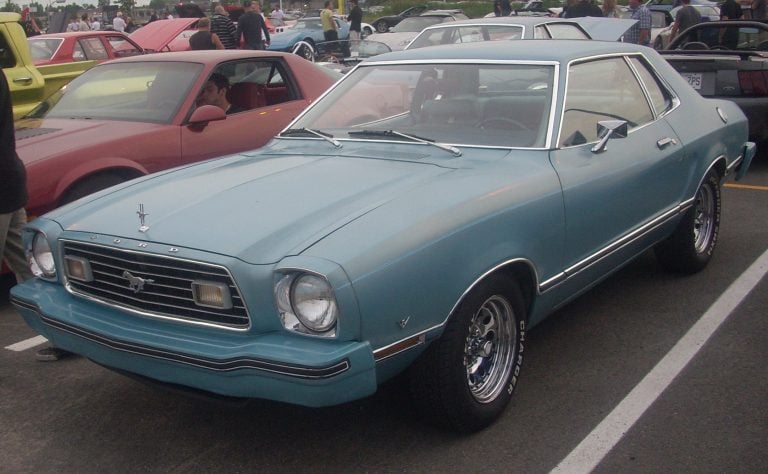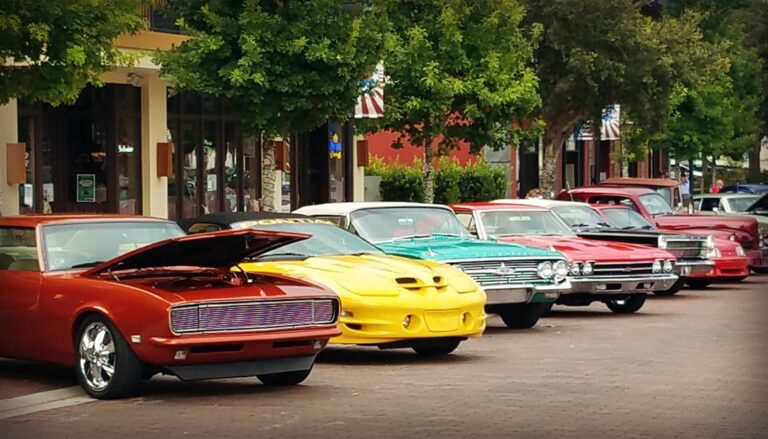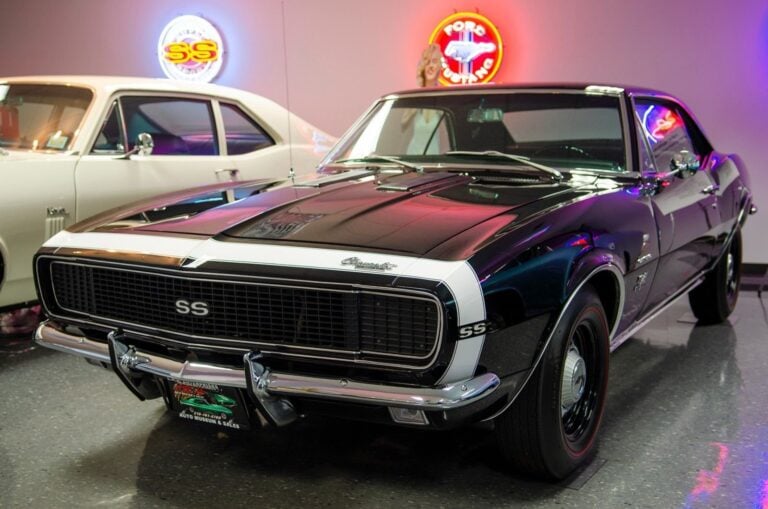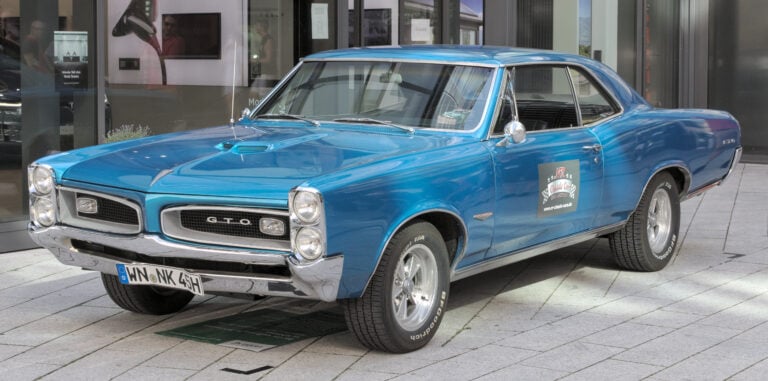The 30 Best Sports Cars Ever Made: A Definitive Ranking of Automotive Excellence

Sports cars represent the pinnacle of automotive performance, combining speed, handling, and design in ways that capture the imagination of enthusiasts worldwide.
These machines have evolved from simple racing derivatives to sophisticated engineering marvels that push the boundaries of what’s possible on four wheels.
This comprehensive ranking examines 30 legendary sports cars that have defined automotive excellence across different eras, from classic European exotics to modern supercars and affordable performance icons.
The selection spans renowned manufacturers like Porsche, Ferrari, and Lamborghini alongside unexpected entries that proved exceptional performance doesn’t always require exotic badges.
Each vehicle earned its place through a combination of driving dynamics, cultural impact, and lasting influence on the automotive landscape.
1. Porsche 911

The Porsche 911 stands as the definitive sports car icon. Since its 1963 debut, this rear-engine masterpiece has maintained its distinctive silhouette while evolving through multiple generations.
Porsche’s engineering excellence transformed what could have been a flawed design into automotive perfection. The 911’s unique rear-engine layout creates exceptional traction and distinctive handling characteristics that drivers either love or learn to master.
The car combines sublime dynamics with world-class build quality. Each generation offers something special, from the raw purity of early air-cooled models to the sophisticated power of modern turbocharged variants.
The 911’s versatility sets it apart from competitors. Whether configured as a daily driver, track weapon, or weekend cruiser, it delivers consistent performance across all scenarios.
After six decades of continuous production, the 911 remains relevant and desirable. Its ability to evolve while preserving core design principles makes it the ultimate sports car benchmark.
2. Ferrari Testarossa
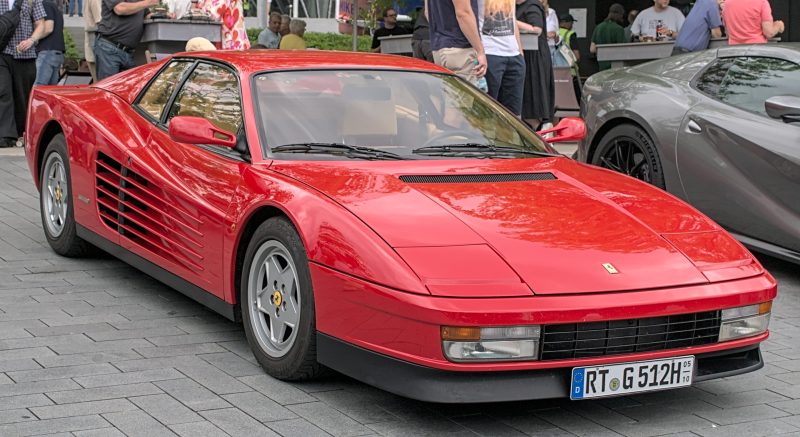
The Ferrari Testarossa stands as one of the most recognizable supercars of the 1980s. Pininfarina designed this iconic machine with distinctive side strakes and angular bodywork that defined the decade’s aesthetic.
Production began in 1984 as the successor to the Berlinetta Boxer. The car remained in production until 1991, with 7,177 units manufactured during this period.
The Testarossa featured a naturally aspirated 4.9-liter flat-12 engine positioned mid-ship. This powerplant generated 390 horsepower and 361 lb-ft of torque, delivering impressive performance for its era.
Miami Vice immortalized the Testarossa in popular culture, showcasing its wedge-shaped profile and pop-up headlights. The car’s dramatic side air intakes became a signature design element that remains instantly recognizable today.
Two revised models followed the original Testarossa: the 512 TR and F512 M, extending the lineage through 1996.
3. Mitsubishi Lancer Evo VIII

The Mitsubishi Lancer Evolution VIII represents the pinnacle of rally-bred engineering translated for street use. Released in 2003, it combined turbocharged power with sophisticated all-wheel drive technology.
The Evo VIII featured a 2.0-liter turbocharged four-cylinder engine producing 271 horsepower. This powerplant delivered impressive acceleration and responsive throttle characteristics that made it a favorite among performance enthusiasts.
Mitsubishi’s Super All Wheel Control system provided exceptional traction and handling dynamics. The active center differential and electronic stability aids allowed drivers to exploit the car’s potential in various conditions.
The eighth generation introduced refined aerodynamics and improved suspension tuning. These enhancements contributed to better high-speed stability and cornering performance compared to earlier models.
Rally heritage influenced every aspect of the Evo VIII’s design. Competition-proven technologies filtered down to create a road car that maintained strong connections to motorsport success.
4. Subaru Impreza WRX

The Subaru Impreza WRX emerged in the 1990s as a rally-bred performance icon. This turbocharged all-wheel-drive sedan transformed affordable motorsport accessibility.
Subaru developed the WRX to homologate their World Rally Championship efforts. The result was a practical four-door that delivered genuine rally car DNA to everyday drivers.
The original WRX featured a 2.0-liter turbocharged boxer engine producing around 240 horsepower. Its symmetrical all-wheel-drive system provided exceptional traction in all conditions.
Multiple generations followed, each refining the formula. The STI variants pushed performance further with additional power, upgraded brakes, and enhanced suspension components.
The WRX’s distinctive hood scoop, flared fenders, and large rear wing became automotive design signatures. Gold wheels on blue paint created an instantly recognizable aesthetic.
Rally victories cemented the WRX’s reputation as a legitimate performance machine. Its ability to compete with more expensive sports cars while maintaining daily usability made it legendary.
5. Acura NSX (First Gen)

The first-generation Acura NSX debuted in 1989 and redefined what a supercar could be. Honda built this mid-engine exotic from 1990 to 2006, proving that reliability and daily usability didn’t require compromise.
The NSX featured groundbreaking technology including the world’s first all-aluminum monocoque chassis. Its naturally aspirated V6 engine produced 270-290 horsepower depending on the year, paired with Honda’s innovative VTEC valvetrain system.
This Japanese supercar challenged European dominance by offering superior build quality and practicality. Unlike temperamental Italian exotics, the NSX started every morning and required minimal maintenance.
The car’s influence extended beyond Honda, inspiring Gordon Murray’s McLaren F1 design. Its balanced handling, lightweight construction, and Formula One-derived technology set new standards for the entire supercar segment.
Three main iterations existed, with later models receiving larger 3.2-liter engines and revised styling cues.
6. Aston Martin DBS Superleggera

The DBS Superleggera represents Aston Martin at its most powerful. This grand tourer produces 715 horsepower from its twin-turbocharged 5.2-liter V12 engine, making it the most potent production Aston Martin ever built.
The car reaches a top speed of 211 mph. Carbon fiber bodywork reduces weight while enhancing the vehicle’s aggressive styling compared to the DB11 platform it’s based on.
Aston Martin focused heavily on aerodynamics for the DBS Superleggera. The design manages airflow to reduce drag and increase downforce, working with the adaptive suspension system to deliver exceptional handling.
Production ran from 2018 to 2024. The DBS nameplate returned after decades, originally appearing in 1967, while the Superleggera designation pays tribute to Touring’s lightweight construction methods used on classic Aston Martins.
7. Audi R8 V10 Plus

The Audi R8 V10 Plus stands as one of the most accomplished supercars of the modern era. Its 5.2-liter naturally aspirated V10 engine produces 610 horsepower, delivering exceptional performance across all driving conditions.
Audi positioned the 2017 model as the pinnacle of R8 development. The car features mid-engine architecture and Quattro all-wheel drive, providing superior balance and traction.
The V10 Plus achieved remarkable success on racing circuits before transitioning to street production. Its engineering excellence earned multiple World Performance Car awards in 2008, 2010, and 2016.
The supercar combines Audi Sport components with refined daily usability. Its performance capabilities represent the fastest production car Audi has ever manufactured.
Production numbers remained limited, making the V10 Plus a rare sight on roads. The model marked the end of Audi’s V10-powered era, cementing its status as a significant automotive milestone.
8. BMW M2 Competition

The BMW M2 Competition stands as one of BMW’s finest performance offerings. Introduced in 2018, it replaced the original M2 with significant mechanical upgrades.
BMW equipped the M2 Competition with the twin-turbo straight-six engine from the M3 and M4. This powerplant delivers exceptional performance in the compact 2-Series platform.
The car represents BMW’s commitment to traditional performance values. While other manufacturers pursue smaller engines for efficiency, BMW chose raw power for the M2 Competition.
The combination of the potent S55 engine in the lightweight coupe body creates remarkable driving dynamics. This formula has earned widespread recognition among automotive enthusiasts.
The M2 Competition maintains the driver-focused character that defines BMW’s M division. Its precise handling and responsive steering deliver an engaging experience on both road and track.
9. BMW M3 E46

The BMW E46 M3 produced from 2000 to 2006 represents the pinnacle of naturally aspirated M3 performance. Its 3.2-liter inline-six engine delivers 333 horsepower with a distinctive high-rpm character.
The E46 chassis provides exceptional balance between comfort and track capability. Engineers refined the suspension geometry to deliver precise handling without sacrificing daily usability.
Build quality reached new heights during this generation. The interior features premium materials and ergonomic design that aging gracefully over two decades.
The S54 engine requires higher maintenance than standard BMW motors. Oil changes and valve adjustments demand strict adherence to service intervals.
Market values continue climbing as enthusiasts recognize the E46’s significance. Clean examples with manual transmissions command premium prices in today’s collector market.
The E46 M3 established the template for modern performance sedans. Its combination of power, handling, and refinement influenced an entire generation of sports cars.
10. Dodge Viper

The Dodge Viper established itself as America’s most aggressive sports car from 1992 to 2017. This raw performance machine featured a massive V10 engine that delivered uncompromising power and torque.
Dodge built the Viper with a no-compromise philosophy. The car prioritized pure driving experience over luxury amenities or electronic assistance systems.
The Viper’s distinctive long hood and aggressive styling made it instantly recognizable. Its wide stance and muscular proportions conveyed serious performance intentions to onlookers.
Five generations evolved the original concept while maintaining the core identity. Each iteration refined the handling and power delivery without sacrificing the visceral driving character.
The final models produced impressive track times that competed with European supercars. Despite discontinuation in 2017, the Viper remains a benchmark for American sports car engineering and represents the pinnacle of domestic muscle car evolution.
11. Honda S2000
The Honda S2000 debuted in 1999 as a pure sports car that prioritized driving experience above all else. Honda engineered this roadster with a naturally aspirated F20C four-cylinder engine that produced exceptional power through high revs.
Two generations existed during production. The AP1 and AP2 models shared nearly identical styling but featured different engine configurations, with the later AP2 receiving the larger F22C engine.
The S2000’s rear-wheel drive layout and precise handling made it a favorite among driving enthusiasts. Its minimalist interior focused entirely on the driver connection to the road.
Production ended in 2009, but the S2000 remains highly regarded for its engineering excellence. The car struck an ideal balance between modern reliability and engaging analog driving dynamics that many contemporary sports cars lack.
12. Chevrolet Corvette
The Chevrolet Corvette debuted in 1953 as America’s first true sports car. Only 300 units rolled off the production line that inaugural year.
The early models struggled with performance issues. Chevrolet nearly discontinued the nameplate after the disappointing 1953 and 1954 models.
Everything changed in 1955 when Chevrolet added a V8 engine. The 265 cubic inch powerplant transformed the Corvette into a legitimate sports car competitor.
Over eight generations, the Corvette evolved dramatically. Each iteration pushed boundaries in design, performance, and technology.
The 2015 Z06 demonstrated American engineering prowess with its supercharged 6.2-liter LT4 V8. This beast produced 650 horsepower and 650 lb-ft of torque.
The latest C8 generation marked a revolutionary shift to mid-engine configuration. This layout change brought the Corvette closer to exotic European rivals while maintaining its accessible American character.
13. Mazda MX-5 Miata
The Mazda MX-5 Miata debuted in 1989 as a pure sports car focused on driving enjoyment. This lightweight two-seater roadster captured the essence of classic British sports cars with modern reliability.
The Miata holds the Guinness World Record as the best-selling two-seat sports car of all time. Its rear-wheel drive layout and near-perfect weight distribution deliver exceptional handling characteristics.
Mazda has maintained the car’s core philosophy through four generations. The focus remains on lightweight construction, precise steering, and an engaging driving experience rather than raw power.
The car’s affordable price point makes sports car ownership accessible to many enthusiasts. Its mechanical simplicity and parts availability contribute to low maintenance costs and high reliability ratings.
Track-focused special editions like the Club Sport have provided enhanced performance for serious drivers. The Miata’s balanced chassis responds well to modifications while remaining enjoyable in stock form.
14. Ford Mustang
The Ford Mustang launched in 1964 as America’s original pony car. It created an entirely new automotive category that combined sporty styling with affordable pricing.
The 1967 GT gained legendary status through the Steve McQueen film “Bullitt.” Its Highland Green paint and high-speed chase scenes made it an instant classic.
Ford has produced over 10 million Mustangs across six generations. The car remains one of the best-selling sports cars globally and attracts extensive modification for racing applications.
The 2020 Shelby GT500 represents the most powerful factory Mustang ever built. Its supercharged 5.2-liter V8 engine produces 760 horsepower and 625 lb-ft of torque.
The Mustang’s enduring appeal stems from its combination of American muscle, accessible performance, and iconic design. It continues to evolve while maintaining its core identity as an affordable sports car.
15. Chevrolet Camaro
The Chevrolet Camaro debuted in 1966 as a direct response to Ford’s Mustang success. It quickly established itself as one of America’s most iconic muscle cars.
The first-generation Camaro offered multiple engine options. The Z/28 variant became legendary with its high-revving small-block V8 engine and track-focused performance.
The 1969 Yenko Camaro represents one of the ultimate expressions of American muscle. Created by dealer Don Yenko, these modified Camaros featured big-block engines producing substantial horsepower.
The 1970 Z/28 marked another high point in Camaro history. It utilized the LT-1 350ci V8 from the Corvette, generating 360 horsepower in a lighter package.
Throughout its production run, the Camaro has maintained its position as an affordable performance car. It successfully balances daily usability with genuine sports car capabilities, making it accessible to enthusiasts across generations.
16. Volkswagen Golf GTI
The Volkswagen Golf GTI revolutionized the hot hatchback segment when it debuted in 1976. Six engineers secretly developed this “Sports Golf” with 110 horsepower and a 112 mph top speed.
The GTI became the template for affordable performance cars. It combined practicality with genuine sporting ability in a compact package.
Multiple generations have followed, each refining the formula. The Mk2 remains highly regarded for its driving dynamics and build quality.
Modern GTIs like the Edition 50 represent the most powerful production versions ever made. The Clubsport S stands out as many enthusiasts’ choice for the ultimate GTI variant.
The GTI’s enduring appeal lies in its accessibility. It delivers genuine performance without exotic car costs or compromises in daily usability.
17. Mini Cooper S
The Mini Cooper S emerged in 1963 as an enhanced version of the standard Mini Cooper. John Cooper, a Formula One racing car producer, partnered with BMC to create this performance variant.
The Cooper S featured a transverse engine layout paired with front-wheel drive. This configuration produced a highly efficient and compact vehicle profile with exceptional handling characteristics.
The car’s low center of gravity and wheel placement at each extreme corner provided solid handling dynamics. These engineering features set it apart from contemporary vehicles of its era.
The Mini Cooper S achieved significant motorsport success in rally competition. It secured Monte Carlo Rally victories in 1964, 1965, and 1967, establishing its racing credentials.
The vehicle’s nimble handling and small size made it ideal for motorsport applications. Its compact dimensions combined with enhanced performance created a formidable competition package that defined the hot hatch segment.
18. Lamborghini Huracán
The Lamborghini Huracán replaced the successful Gallardo in 2014. It served as Lamborghini’s entry-level model until production ended in 2024.
The Huracán features a naturally aspirated 5.2-liter V10 engine producing 570 horsepower. This power enables acceleration from 0-60 mph in 3.4 seconds and a top speed of 198 mph.
Lamborghini developed 19 different variants of the Huracán during its production run. These included track-focused versions and special editions catering to different performance preferences.
The car combines sharp Italian design with improved drivability compared to earlier Lamborghini models. Its aerodynamic bodywork reflects modern supercar engineering principles.
The Huracán successfully continued Lamborghini’s tradition in the entry-level supercar segment. It maintained the brand’s characteristic aggressive styling while offering enhanced everyday usability for drivers.
19. Toyota Supra Mk4
The Toyota Supra Mk4 emerged in the 1990s as Japan’s answer to European supercars. Its twin-turbocharged 2JZ-GTE engine produced 320 horsepower from the factory.
The car featured a sleek, aerodynamic design with a drag coefficient of 0.32. This helped it achieve impressive high-speed stability and performance.
Initially, the Mk4 Supra received mixed reception in the market. Sales were modest, and Toyota discontinued it in 2002 due to poor commercial performance.
The Fast and Furious franchise transformed the Supra’s reputation dramatically. What was once an overlooked sports car became a cultural icon and tuning legend.
Enthusiasts discovered the 2JZ engine’s incredible potential for modification. The robust inline-six could reliably handle massive power increases with proper tuning.
Today, clean examples command premium prices in the collector market. The Mk4 Supra represents the pinnacle of 1990s Japanese sports car engineering.
20. BMW M4
The BMW M4 represents the evolution of BMW’s legendary M3 coupe lineage. When BMW split the M3 line in 2014, the M4 became the dedicated two-door performance variant.
The first-generation M4 featured a twin-turbocharged 3.0-liter inline-six engine producing 425 horsepower. This powerplant delivered exceptional performance with a 0-60 mph time of just 4.1 seconds.
BMW’s engineers focused on weight reduction and aerodynamic efficiency. Carbon fiber components, including the roof and front splitter, helped optimize the power-to-weight ratio.
The M4’s handling characteristics showcase BMW’s motorsport heritage. Adaptive suspension, electronic differential, and multiple driving modes provide precise control across various conditions.
Track-focused variants like the M4 GTS and M4 CSL pushed performance boundaries further. These limited-edition models featured enhanced aerodynamics, reduced weight, and increased power output for serious driving enthusiasts.
21. Mercedes-Benz AMG C 63 Coupe
The Mercedes-AMG C63 Coupe represents the perfect balance of luxury and performance in a compact sports car package. Its 4.0-liter twin-turbo V8 engine delivers exceptional power with the signature AMG exhaust note.
The coupe’s design combines aggressive styling with refined Mercedes craftsmanship. Sharp lines and muscular proportions give it a commanding road presence.
Performance credentials include rear-wheel drive configuration and advanced chassis technology. The car maintains the traditional AMG philosophy while incorporating modern engineering solutions.
The C63 Coupe has earned recognition from automotive journalists since its introduction. It competes directly with the BMW M4 and other premium sport coupes in its segment.
Interior appointments feature high-quality materials and advanced digital systems. The cabin strikes a balance between comfort and sport-focused design elements that enhance the driving experience.
22. Subaru BRZ
The Subaru BRZ debuted in 2013 as an affordable rear-wheel-drive sports car. Developed jointly with Toyota, it filled a crucial gap in the entry-level performance market.
The BRZ features a naturally aspirated 2.4-liter flat-four engine producing adequate power for spirited driving. Its lightweight construction and low center of gravity create exceptional handling dynamics.
Subaru designed the BRZ with driver engagement as the primary focus. The car delivers precise steering feedback and balanced chassis characteristics that reward skilled drivers.
The 2025 BRZ tS recently earned TopSpeed’s Best Sports Car of the Year award. It also received recognition from Edmunds as their Top Rated Sports Car in 2022.
The BRZ ranks among the best sports cars for value, consistently placing in top-three lists for affordable performance vehicles. Its combination of accessibility and driving purity makes it a standout choice for enthusiasts seeking an authentic sports car experience.
23. Toyota 86
The Toyota 86 represents pure sports car philosophy stripped to its essentials. This lightweight coupe delivers authentic rear-wheel-drive dynamics without excessive power or complexity.
Toyota developed the 86 through collaboration with Subaru, resulting in a naturally aspirated 2.0-liter boxer engine. The car produces around 200 horsepower, creating an ideal balance between performance and control.
The 86’s low center of gravity and precise steering make it exceptional for enthusiast driving. Its affordable price point opens sports car ownership to younger drivers and those seeking track-day capability.
Manual transmission remains standard, preserving the connection between driver and machine. The car’s design prioritizes handling over straight-line speed.
Modern iterations like the GR86 continue this tradition with refined dynamics and improved interior quality. The platform has maintained its core mission of delivering accessible performance driving for over a decade.
24. Plymouth Superbird
The 1970 Plymouth Superbird emerged from NASCAR’s fierce Aero Wars competition. Plymouth designed this muscle car specifically to counter Ford and Dodge rivals on the racetrack.
Its aerodynamic nose cone and towering rear wing created an unmistakable silhouette. These features weren’t just for show – they enabled the Superbird to exceed 200 mph on NASCAR tracks.
Under the hood, buyers could choose between a 440 Six Pack V8 or the legendary 426 Hemi engine. Both powerplants delivered the performance needed to match the car’s aerodynamic capabilities.
The Superbird’s racing success proved so dominant that NASCAR eventually banned the model. This forced rule change cemented its legendary status in motorsports history.
Today, pristine examples command million-dollar prices at auctions, especially Hemi-powered versions.
25. Fiat 8V Berlinetta by Zagato
The Fiat 8V emerged in 1952 as a limited-production sports car designed by chief engineer Dante Giacosa. Only 114 examples were built between 1952 and 1955.
Zagato created approximately 24 lightweight berlinetta bodies for the 8V chassis. These aluminum-bodied cars featured clean, uncluttered lines without hood scoops or side vents.
The car weighed under 1,000 kilograms and used a Siata-built chassis. Its 2-liter V8 engine produced 110 horsepower, delivering a top speed of 190 km/h.
Zagato’s aerodynamic styling made these cars particularly successful in motorsport. They achieved numerous victories in the Italian Sports Car Championship during the 1950s.
The first-series Zagato berlinetta represents the purest expression of this collaboration. One notable example, chassis 000065, remains the only right-hand-drive 8V ever built.
26. Nissan GT-R R34
The Nissan Skyline GT-R R34 dominated Japanese sports car culture from 1999 to 2002. This final generation of the original Skyline GT-R series represented the peak of Nissan’s engineering prowess.
The R34 featured the legendary RB26DETT twin-turbo inline-six engine. Advanced technology included the ATTESA E-TS Pro all-wheel-drive system, providing exceptional traction and handling dynamics.
Its aggressive styling and functional aerodynamics created an instantly recognizable silhouette. The car gained massive popularity through video games and film appearances, cementing its status in automotive culture.
Performance capabilities were extraordinary for its era. The R34 could accelerate from 0-60 mph in under five seconds while maintaining remarkable stability at high speeds.
Today, pristine examples command premium prices exceeding $300,000. The R34 remains the most sought-after model among JDM enthusiasts worldwide.
27. Jaguar F-Type Coupe
The Jaguar F-Type debuted in 2014 as the spiritual successor to the legendary E-Type. This two-seater sports car combines British luxury with modern performance capabilities.
The F-Type Coupe features distinctive styling that balances elegance with aggressive sportiness. Its muscular proportions and flowing lines create an instantly recognizable silhouette.
Under the hood, the F-Type offers multiple engine options ranging from turbocharged four-cylinders to supercharged V8s. The range-topping SVR variant delivers exceptional power and track-focused performance.
The interior showcases premium materials and craftsmanship typical of Jaguar’s luxury approach. Modern technology integrates seamlessly with traditional British design elements.
The F-Type competes directly with established rivals like the Porsche 718 Cayman. Its combination of performance, luxury, and distinctive character makes it a compelling choice in the sports car segment.
28. McLaren 720S
The McLaren 720S established itself as a benchmark in the supercar segment when it launched in 2017. This machine combines McLaren’s racing heritage with cutting-edge engineering technology.
The 720S features a lightweight carbon fiber construction that enhances both performance and handling. Its aerodynamic design serves functional purposes while creating striking visual appeal.
Power comes from a twin-turbocharged V8 engine that delivers explosive acceleration. The sophisticated suspension system allows the car to handle track corners with precision while maintaining comfort on public roads.
McLaren equipped the 720S with advanced aerodynamics that actively adjust to driving conditions. The car’s design balances aggressive performance capability with everyday usability.
The 720S represents McLaren’s fourth production model since the brand’s 2010 founding. It successfully bridges the gap between McLaren’s sports car lineup and their ultimate series vehicles.
29. Lotus Elise
The Lotus Elise debuted in 1996 as a lightweight two-seater roadster. It weighed just 1,598 pounds, making it exceptionally light for a sports car.
Despite having only a 118-horsepower engine initially, the Elise could accelerate from 0-60 mph in 5.8 seconds. The car’s minimal weight compensated for its modest power output.
The Elise featured a fiberglass body shell mounted on a bonded extruded aluminum chassis. This construction provided structural rigidity while maintaining the car’s featherweight character.
Later versions like the Elise Cup 220 offered more performance with a supercharged Toyota engine producing 214 horsepower. These variants could reach 60 mph in 4.3 seconds.
The car exemplified Lotus’s engineering philosophy of lightweight construction and superior handling. Its rear mid-engine layout and precise steering made it a favorite among driving enthusiasts who valued pure driving experience over luxury features.
30. Alfa Romeo 4C
The Alfa Romeo 4C stands as a lightweight carbon fiber masterpiece that returned the Italian marque to its sports car roots. Production ran from 2013 to 2021, creating a limited run that makes it increasingly desirable.
Its mid-mounted 1.7-liter turbocharged four-cylinder engine produces 237 horsepower. The carbon fiber monocoque keeps weight under 2,500 pounds, delivering exceptional power-to-weight ratios.
The 4C’s design captures classic Alfa Romeo beauty with modern aerodynamics. Its aggressive stance and flowing lines make it instantly recognizable on the road.
Current market values average around $60,000, making it accessible compared to other exotic sports cars. The combination of Italian styling, lightweight construction, and turbocharged performance creates a pure driving experience.
The 4C represents Alfa Romeo’s commitment to driver-focused engineering over comfort amenities.
Defining the Sports Car: Key Characteristics
Sports cars distinguish themselves through specific performance metrics, innovative engineering solutions, and an uncompromising focus on driver engagement. These vehicles prioritize speed, handling precision, and emotional connection over practicality.
Performance Benchmarks
Sports cars must achieve measurable performance standards that separate them from conventional vehicles. Acceleration from 0-60 mph in under 6 seconds represents the baseline for modern sports cars, with exceptional examples reaching this mark in under 4 seconds.
Power-to-weight ratios typically exceed 200 horsepower per ton. This metric determines how efficiently a vehicle converts engine output into acceleration and responsiveness.
Top speeds generally surpass 140 mph, though this varies significantly based on the car’s intended purpose. Track-focused models may sacrifice ultimate speed for cornering capability.
Braking performance demands stopping distances from 60 mph in under 120 feet. High-performance brake systems with large rotors and advanced materials enable repeated hard stops without fade.
Lateral acceleration capabilities of 0.85g or higher during cornering separate sports cars from regular vehicles. This measurement reflects suspension tuning, tire grip, and chassis rigidity working together.
Design and Engineering Innovation
Sports car design prioritizes aerodynamic efficiency and visual impact. Low-slung profiles reduce drag coefficients below 0.35 while creating distinctive silhouettes that communicate performance intent.
Lightweight construction utilizing aluminum, carbon fiber, and advanced high-strength steels keeps curb weights competitive. Every pound saved improves acceleration, braking, and handling dynamics.
Mid-engine and rear-engine configurations appear frequently in sports car design. These layouts optimize weight distribution for superior balance and cornering characteristics compared to front-heavy conventional cars.
Advanced suspension systems feature independent designs with adjustable dampers and anti-roll bars. Multi-link rear setups and double-wishbone front configurations maximize tire contact patches during dynamic driving.
Engine placement behind the driver, as seen in models like the Lotus Europa and Esprit, creates exceptional handling characteristics through centralized mass distribution.
Driver Experience
Sports cars deliver direct steering feedback through mechanical or well-tuned electric systems. Steering ratios between 12:1 and 15:1 provide quick response without becoming twitchy during highway driving.
Manual transmissions or advanced dual-clutch automatics maintain driver control over gear selection. Six-speed manuals remain popular for their mechanical engagement and precise shift quality.
Seating positions place drivers low in the chassis with optimal pedal placement and steering wheel positioning. Supportive bucket seats hold occupants during cornering forces while maintaining comfort.
Minimalist interiors focus on essential controls and driving-related information. Digital displays show performance metrics like lateral g-forces, lap times, and engine parameters that conventional cars omit.
The emotional connection between driver and machine defines the sports car experience. Throttle response, exhaust note, and chassis feedback create sensory engagement that transcends mere transportation.
Impact of the 30 Best Sports Cars on Automotive Culture
These legendary machines transformed transportation into cultural phenomena, establishing new design paradigms and creating billion-dollar collector markets. Their influence extends from Hollywood films to modern automotive engineering principles.
Influence on Popular Media
Sports cars became central characters in cinema, television, and literature throughout the decades. The Ferrari 250 GT gained iconic status in “Ferris Bueller’s Day Off,” while the Porsche 911 appeared in countless action films.
James Bond’s Aston Martin DB5 elevated the brand to global recognition in “Goldfinger” (1964). The Ford Mustang starred in “Bullitt” (1968), creating one of cinema’s most famous chase sequences.
Television Impact:
- Miami Vice featured the Ferrari Testarossa as a main character
- Knight Rider made the Pontiac Trans Am synonymous with high-tech adventure
- Top Gear elevated sports car testing to entertainment spectacle
Video games like Gran Turismo and Forza Motorsport introduced millions to legendary models. These platforms preserved automotive history while inspiring new generations of enthusiasts.
Sports car marketing campaigns became cultural touchstones. Porsche’s “There is no substitute” and BMW’s “Ultimate Driving Machine” transcended advertising to become automotive philosophy.
Shaping Automotive Trends
The greatest sports cars established design languages that influenced entire automotive segments. The Jaguar E-Type’s flowing lines inspired luxury sedans and crossovers decades later.
Key Design Innovations:
- Pop-up headlights from the Lamborghini Miura
- Side air intakes pioneered by Ferrari models
- Wide rear fenders from Porsche 911 Turbo
Performance benchmarks set by these cars drove industry-wide technological advancement. The McLaren F1’s carbon fiber construction became standard in supercars. Ferrari’s sequential gearboxes influenced transmission development across manufacturers.
American muscle cars democratized performance, proving speed wasn’t exclusive to expensive European exotics. The Chevrolet Corvette and Ford Mustang created accessible performance templates copied worldwide.
Japanese manufacturers studied European sports cars to develop the Honda NSX, Mazda RX-7, and Toyota Supra. These models proved reliability and performance could coexist.
Modern electric supercars trace their lineage to combustion-engine legends, maintaining similar proportions and performance targets while adopting new powertrains.
Collector Value and Legacy
The most significant sports cars command astronomical auction prices, with some models appreciating faster than traditional investments. A 1962 Ferrari 250 GTO sold for $48.4 million in 2018.
Market Performance Leaders:
- Ferrari 250 GTO: $35-50 million range
- Porsche 917K: $14-17 million
- McLaren F1: $15-20 million
- Lamborghini Miura SV: $2-3 million
Restoration industries emerged around these vehicles, employing specialized craftspeople and creating parts supply chains. Porsche Classic and Ferrari Classiche programs authenticate and restore original specifications.
Car museums worldwide showcase these models as mechanical art. The Petersen Automotive Museum and Goodwood Festival of Speed celebrate their cultural significance beyond transportation.
Concours d’Elegance events like Pebble Beach transformed car collecting into luxury lifestyle experiences. Ownership of significant models grants access to exclusive driving events and social circles.
Modern manufacturers leverage heritage through retro-inspired designs and limited editions. The Ford GT, Porsche 911 Speedster, and Lamborghini Countach LPI 800-4 capitalize on historical significance while incorporating contemporary technology.

